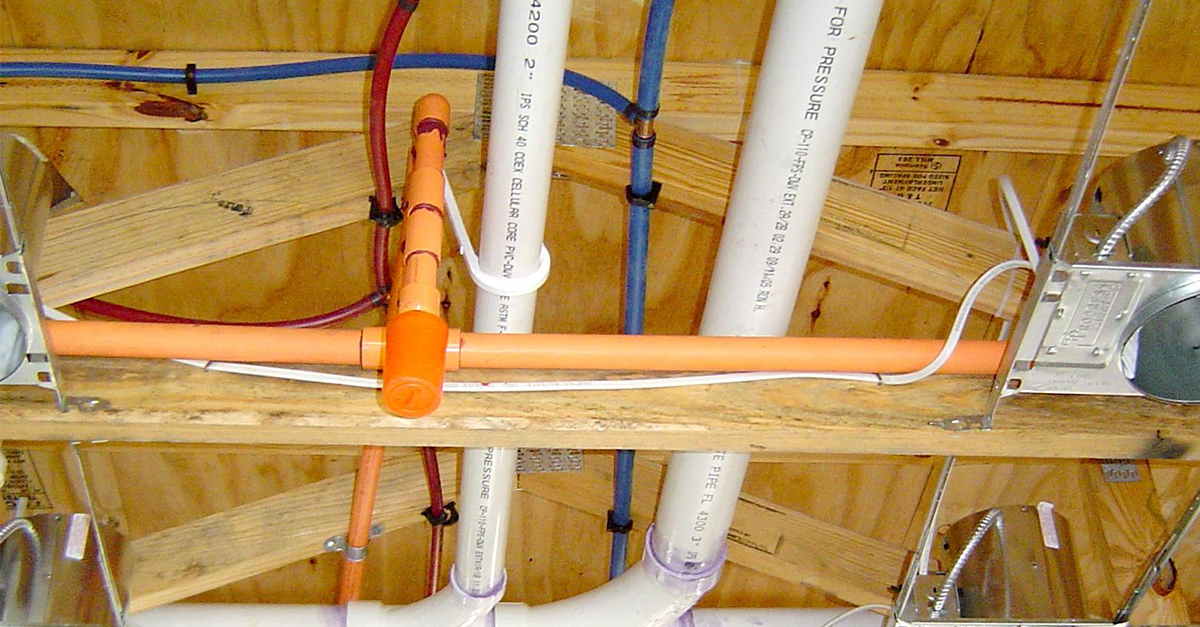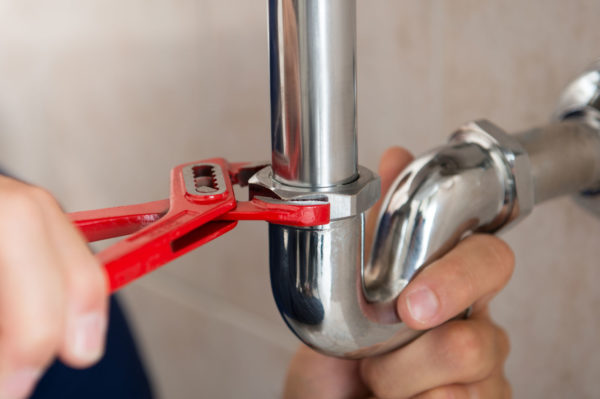Grasping the ABCs of Home Plumbing: A Beginner's Overview
Grasping the ABCs of Home Plumbing: A Beginner's Overview
Blog Article
This great article on the next paragraphs relating to How Does the Plumbing Work in Your Home? is indeed remarkable. Don't bypass it.

Plumbing is a necessary facet of any home, in charge of providing clean water for drinking, cooking, and showering, in addition to eliminating wastewater safely. Comprehending the essentials of home plumbing is essential for each property owner to guarantee appropriate maintenance, troubleshooting, and, if needed, repairs. In this novice's guide, we'll cover the fundamental concepts of home plumbing to help you become more acquainted with just how it works.
Water System System
The supply of water system brings tidy water into your home from a municipal water source or a personal well. It consists of a primary water line that links to your home's plumbing system, generally situated underground. A water meter determines the amount of water eaten, while a shut-off shutoff permits you to manage the circulation of water into your home.
Plumbing Fixtures
Plumbing components are devices that supply water to different parts of your home and consist of sinks, taps, bathrooms, showers, tubs, and home appliances such as dishwashing machines and washing equipments. Each fixture is attached to the water supply system via pipelines and fittings and may have its shut-off valve for upkeep or emergencies.
Water Heater
The water heater is in charge of heating water for residential use, including showering, food preparation, and cleansing. Usual kinds of water heaters include tank-type hot water heater, tankless (on-demand) hot water heater, and heat pump hot water heater. The water heater is linked to the water supply system and provides hot water to plumbing components as required.
Drainage System
The drain system removes wastewater from your home and brings it away to a sewage treatment facility or septic system. It includes a network of pipes, installations, and fixtures that transport wastewater from plumbing fixtures to the main drain line or septic tank. Appropriate drain is necessary to stop clogs, back-ups, and sewage leakages.
Air flow System
The ventilation system aids keep proper air pressure and avoid drain gases from entering your home. Vent pipelines, also referred to as vent stacks, expand from plumbing fixtures to the roof covering, permitting drain gases to get away securely outdoors. Ventilation pipes also permit air to get in the drainage system, helping with smooth wastewater flow and preventing suction or vacuum cleaner impacts.
Typical Plumbing Tools
Having the right tools accessible is essential for carrying out standard plumbing repairs and maintenance tasks. Common plumbing devices include adjustable wrenches, pipe wrenches, pliers, pipeline cutters, hacksaws, bettors, augers (or drainpipe snakes), and Teflon tape. Having these devices readily available can assist you deal with minor plumbing issues efficiently.
Fundamental Plumbing Repairs
While some plumbing repair services may call for expert aid, several common issues can be attended to with basic do it yourself methods. Knowing how to repair a leaking faucet, unclog a drainpipe, replace a toilet flapper, or repair a trickling showerhead can save you money and time on plumbing fixings.
Verdict
Comprehending the basics of home plumbing is essential for every house owner to preserve a risk-free, practical, and effective plumbing system. By acquainting yourself with the water system system, plumbing components, drainage system, air flow system, common plumbing tools, and fundamental repair work, you can confidently address minor plumbing problems and ensure your home's plumbing system operates smoothly.
Plumbing for Beginners: A Comprehensive Guide
If you’re a beginner when it comes to plumbing, don’t worry; you’re not alone. Plumbing may seem intimidating, but with the right knowledge and a little practice, you can handle many common plumbing issues on your own. In this comprehensive guide, we will demystify the world of plumbing for beginners, providing you with the basic knowledge and skills needed to tackle common plumbing problems and even take on some DIY plumbing projects.
The Importance of Basic Plumbing Knowledge for Beginners:
First and foremost, basic plumbing knowledge gives you a solid foundation. It helps you grasp the key concepts and terminology that are essential in this field. By learning the basics, you’ll be able to build upon that knowledge and tackle more complex plumbing tasks in the future.
Having a basic understanding of plumbing also enables you to handle common issues that may arise in your home. Picture this: a leaky faucet or a clogged drain. With some basic plumbing knowledge, you’ll have the confidence to troubleshoot and fix these problems on your own. It saves you from unnecessary expenses and the hassle of waiting for a professional to arrive.
As a beginner, learning the basics of plumbing empowers you to take care of your own home. It gives you a sense of independence and self-reliance. You’ll no longer have to rely solely on professionals for every small issue that pops up. Instead, you can handle many tasks yourself, saving time and money in the process.
Remember, everyone starts as a beginner. Embrace the learning process and take small steps to expand your plumbing knowledge. There are plenty of online resources, tutorials, and even local workshops that talk about plumbing for beginners.
Essential Tools for Plumbing for Beginners
As you start your plumbing journey, having the right tools in your toolbox is crucial. Let’s explore some of the must-have tools:
Adjustable Wrench:
This versatile tool is a staple in any plumber’s toolbox. It allows you to tighten or loosen nuts and bolts of various sizes. Make sure to have an adjustable wrench with a comfortable grip.
Pipe Wrench:
A pipe wrench is specifically designed for gripping and turning pipes. It has serrated jaws that provide a strong grip, making it easier to loosen or tighten threaded pipes and fittings.
Plunger:
The plunger is a simple yet effective tool for clearing clogged drains and toilets. It creates suction when you push and pull, helping to dislodge blockages. Keep a good-quality plunger handy for those unexpected clogs.
Pipe Cutter:
When it comes to cutting pipes, a pipe cutter is your go-to tool. It creates clean, precise cuts without damaging the pipe. Look for a pipe cutter that can handle the pipe sizes you’re working with.
Hacksaw:
A hacksaw is useful for cutting through pipes, screws, and other materials. It’s a versatile tool that can handle different cutting tasks. Remember to use a blade suitable for cutting metal.
Tape Measure:
Accurate measurements are crucial in plumbing. A tape measure allows you to measure pipe lengths, distances, and dimensions accurately. Opt for a sturdy tape measure that extends a good length.
Pliers:
Pliers come in handy for various tasks, such as gripping, bending, and cutting. Slip-joint pliers with adjustable jaws are great for gripping pipes, nuts, and bolts.

Hopefully you enjoyed our topic on What to Know About Plumbing: Basics, Tips, and Insights. Thanks a lot for taking the time to read our blog post. For those who enjoyed our page kindly consider to pass it around. Thank you for your time spent reading it.
Get A Free Quote Report this page